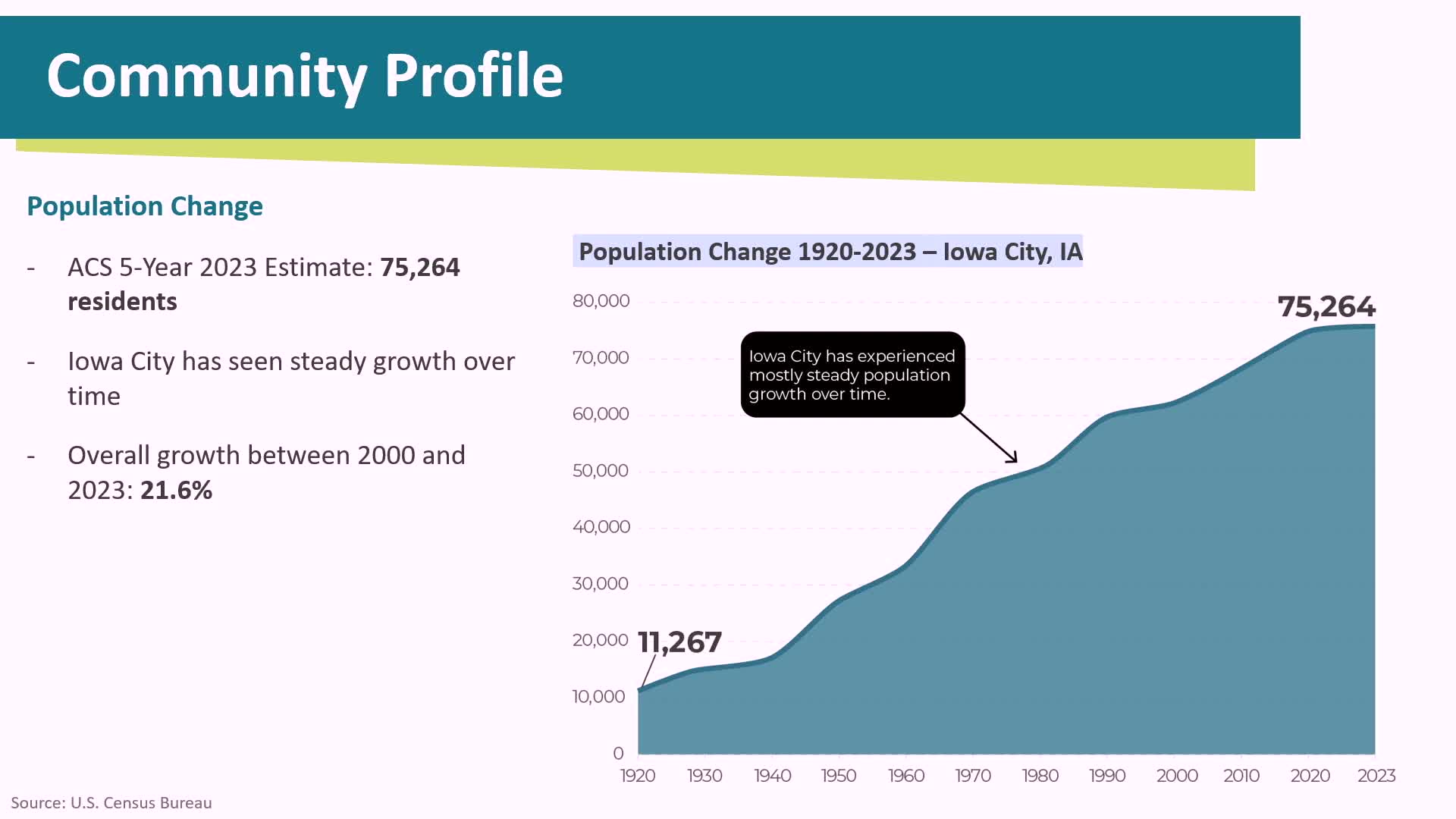Iowa City expects population growth to reach 95,000 by 2050 impacting housing needs
May 07, 2025 | Iowa City, Johnson County, Iowa
Thanks to Scribe from Workplace AI , all articles about Iowa are free for you to enjoy throughout 2025!

This article was created by AI using a video recording of the meeting. It summarizes the key points discussed, but for full details and context, please refer to the video of the full meeting. Link to Full Meeting
The session began with a presentation highlighting a significant population increase in Iowa City, projecting a rise to nearly 95,000 residents by 2050. This growth is expected to create approximately 9,000 new housing units to accommodate the influx, necessitating an annual addition of about 364 new homes, townhomes, and apartments.
Demographic data revealed that 37% of households are single-person, with a nearly equal split between rental and owner-occupied housing. The community exhibits a diverse income range, with a notable percentage of residents holding advanced degrees—30% possess graduate degrees, and 60% have at least a bachelor's degree. However, housing affordability remains a pressing issue, particularly for renters, with nearly 62% considered cost-burdened, spending over 30% of their income on housing.
The discussion also addressed the housing stock, which consists of 40% single-family homes, 20% duplexes and townhomes, and 40% multifamily units. The council acknowledged the need for a balanced housing mix to meet future demands.
Shifting focus to employment, the council noted that healthcare and education are the primary job sectors, with Iowa City serving as a regional employment center. The area has seen fluctuations in job growth, particularly in healthcare, but remains a net importer of jobs, with a healthy balance of residents working within the community.
The meeting concluded with an overview of commercial and industrial development trends. While the office sector faces an 11.5% vacancy rate, industrial spaces show strong demand with only a 3% vacancy rate, indicating continued growth in that sector. Retail spaces also demonstrate low vacancy rates, suggesting a robust local market.
Overall, the council emphasized the importance of addressing housing challenges and planning for future growth to ensure Iowa City remains a vibrant and sustainable community. Further discussions and planning sessions will be necessary to develop strategies that align with these findings.
Converted from Iowa City Council Work Session May 6, 2025 meeting on May 07, 2025
Link to Full Meeting
Comments
View full meeting
This article is based on a recent meeting—watch the full video and explore the complete transcript for deeper insights into the discussion.
View full meeting
